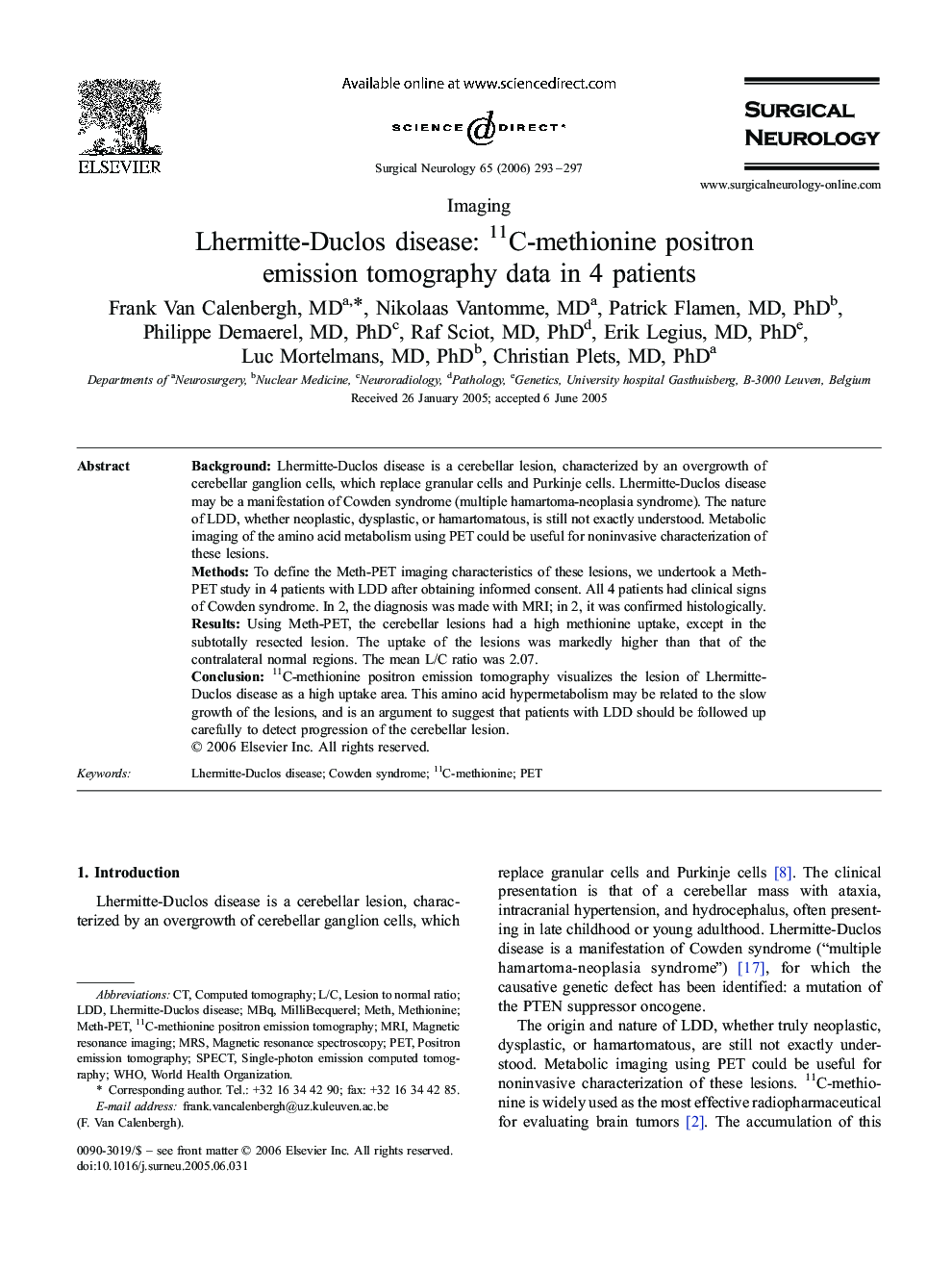| کد مقاله | کد نشریه | سال انتشار | مقاله انگلیسی | نسخه تمام متن |
|---|---|---|---|---|
| 3094228 | 1190557 | 2006 | 4 صفحه PDF | دانلود رایگان |

BackgroundLhermitte-Duclos disease is a cerebellar lesion, characterized by an overgrowth of cerebellar ganglion cells, which replace granular cells and Purkinje cells. Lhermitte-Duclos disease may be a manifestation of Cowden syndrome (multiple hamartoma-neoplasia syndrome). The nature of LDD, whether neoplastic, dysplastic, or hamartomatous, is still not exactly understood. Metabolic imaging of the amino acid metabolism using PET could be useful for noninvasive characterization of these lesions.MethodsTo define the Meth-PET imaging characteristics of these lesions, we undertook a Meth-PET study in 4 patients with LDD after obtaining informed consent. All 4 patients had clinical signs of Cowden syndrome. In 2, the diagnosis was made with MRI; in 2, it was confirmed histologically.ResultsUsing Meth-PET, the cerebellar lesions had a high methionine uptake, except in the subtotally resected lesion. The uptake of the lesions was markedly higher than that of the contralateral normal regions. The mean L/C ratio was 2.07.Conclusion11C-methionine positron emission tomography visualizes the lesion of Lhermitte-Duclos disease as a high uptake area. This amino acid hypermetabolism may be related to the slow growth of the lesions, and is an argument to suggest that patients with LDD should be followed up carefully to detect progression of the cerebellar lesion.
Journal: Surgical Neurology - Volume 65, Issue 3, March 2006, Pages 293–296